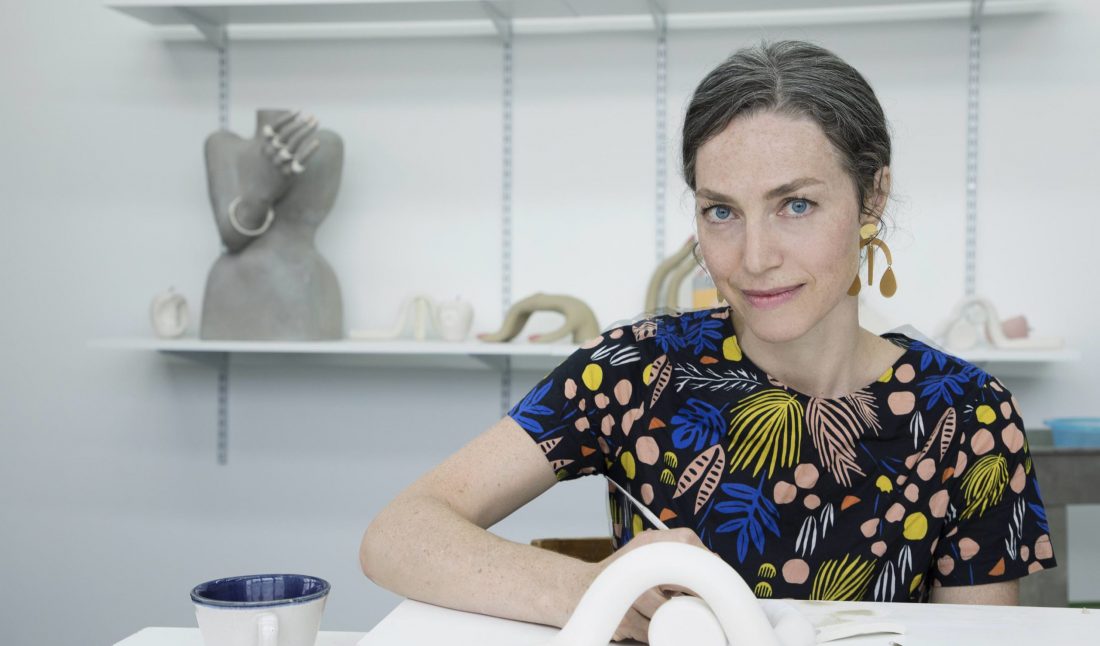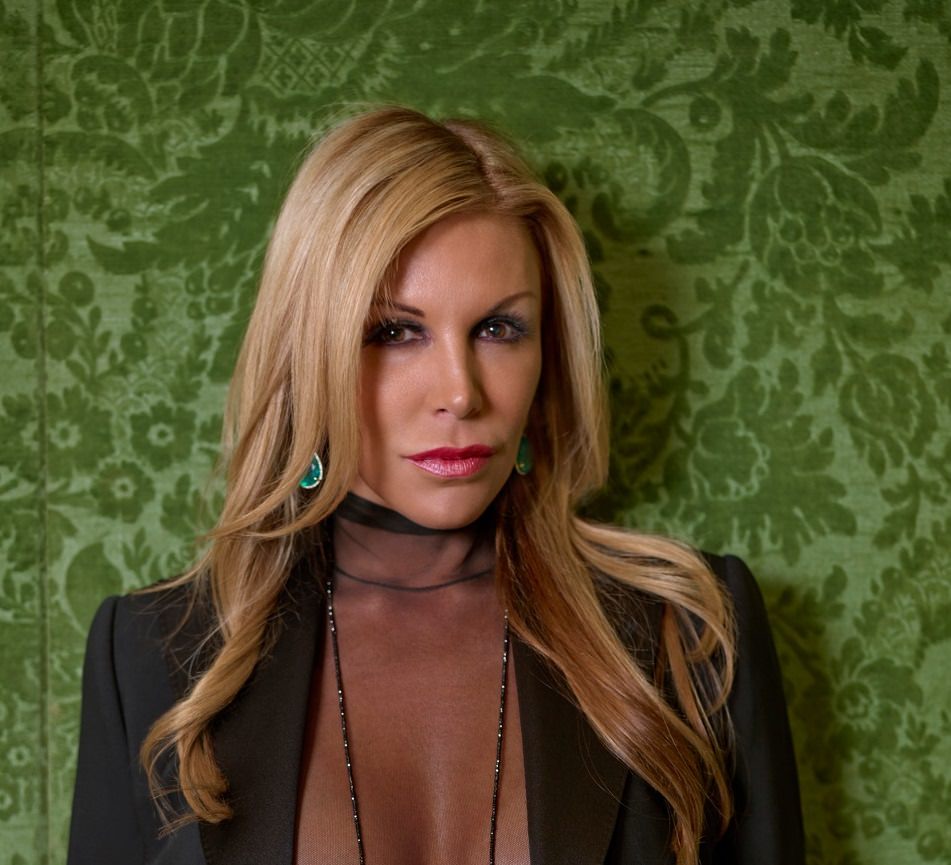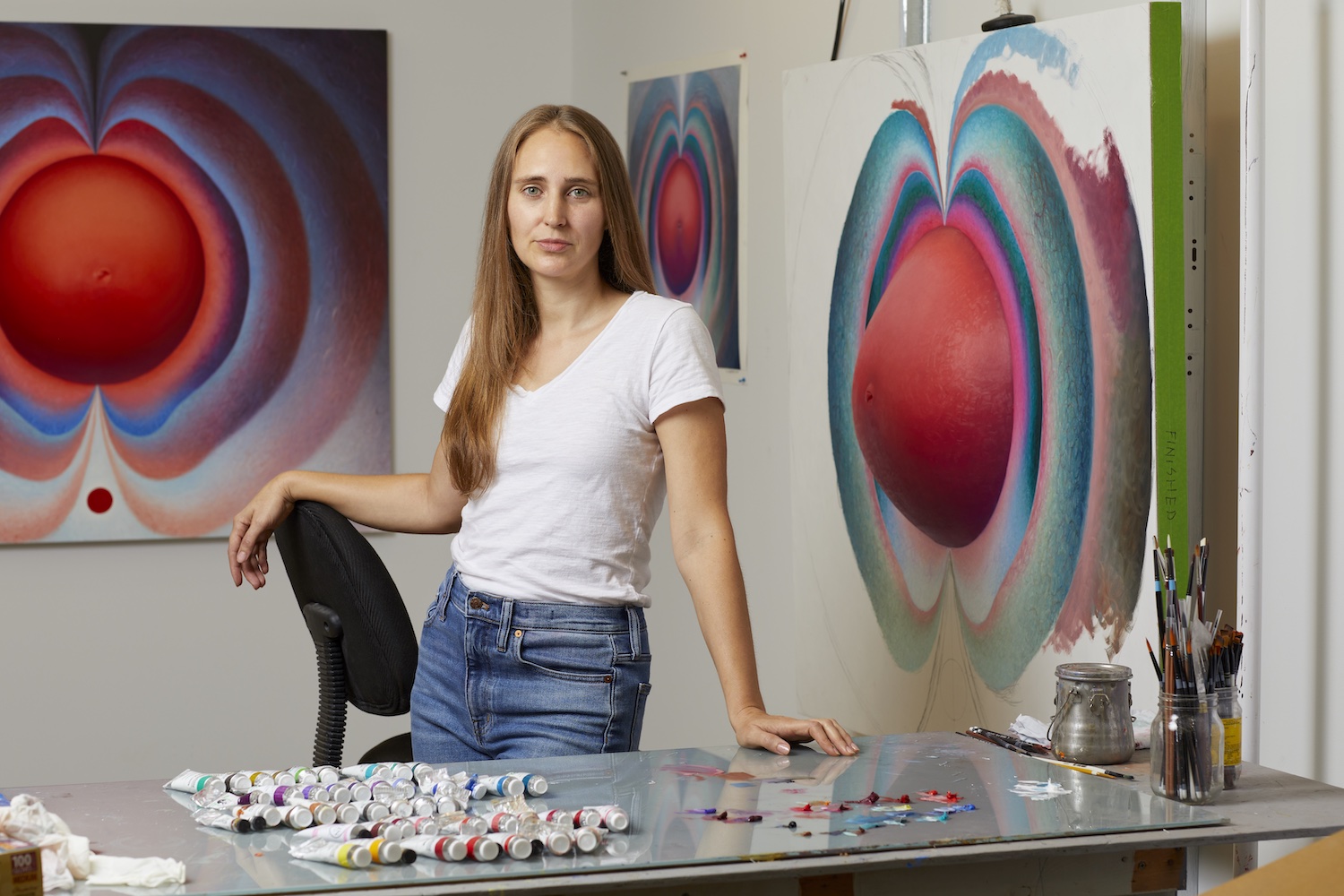One of our favorite things we saw at NADA in New York this past spring was Genesis Belanger’s presentation at Mrs. Gallery’s booth. There, beyond curtains pulled back behind giant ears, was a round table covered in delightful and slightly sinister ceramic works: a hotdog poked out of a purse, a bouquet was complete with a tongue-wagging mouth, a hat was filled with fruit and a half-eaten donut, two lamps had the base of a female bust with just one demurely dangling arm and hand with pink painted nails, a bowl the color of gums had a rim of teeth, and a martini glass was complete with a garnish of olives that more closely resembled eyeballs.
The scene was created by artist Genesis Belanger, who has been in a number of group shows this year at spaces like Nathalie Karg, The Aldrich Contemporary Art Museum, Sophia Contemporary Gallery, and Reyes Projects. This fall, she’s part of a two-person show with Emily Mae Smith at Perrotin in New York.
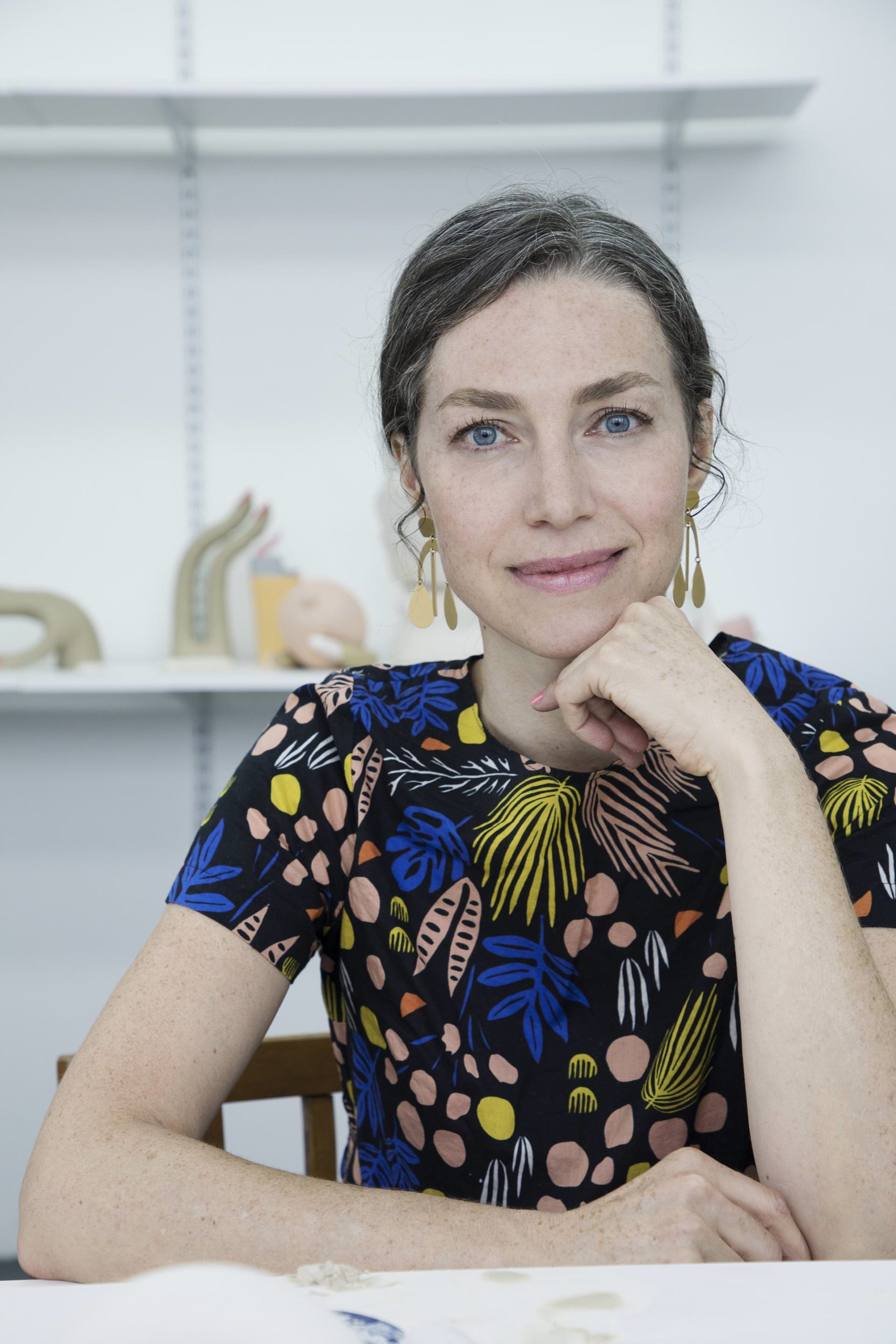 Genesis Belanger in her studio
Genesis Belanger in her studioPhoto by Steve Benisty
Whitewall visited the artist in her Brooklyn studio earlier this summer, where we talked about how objects can be surrogates for ourselves and her love for what she calls “sad pastels.”
WHITEWALL: How long have you been in this space?
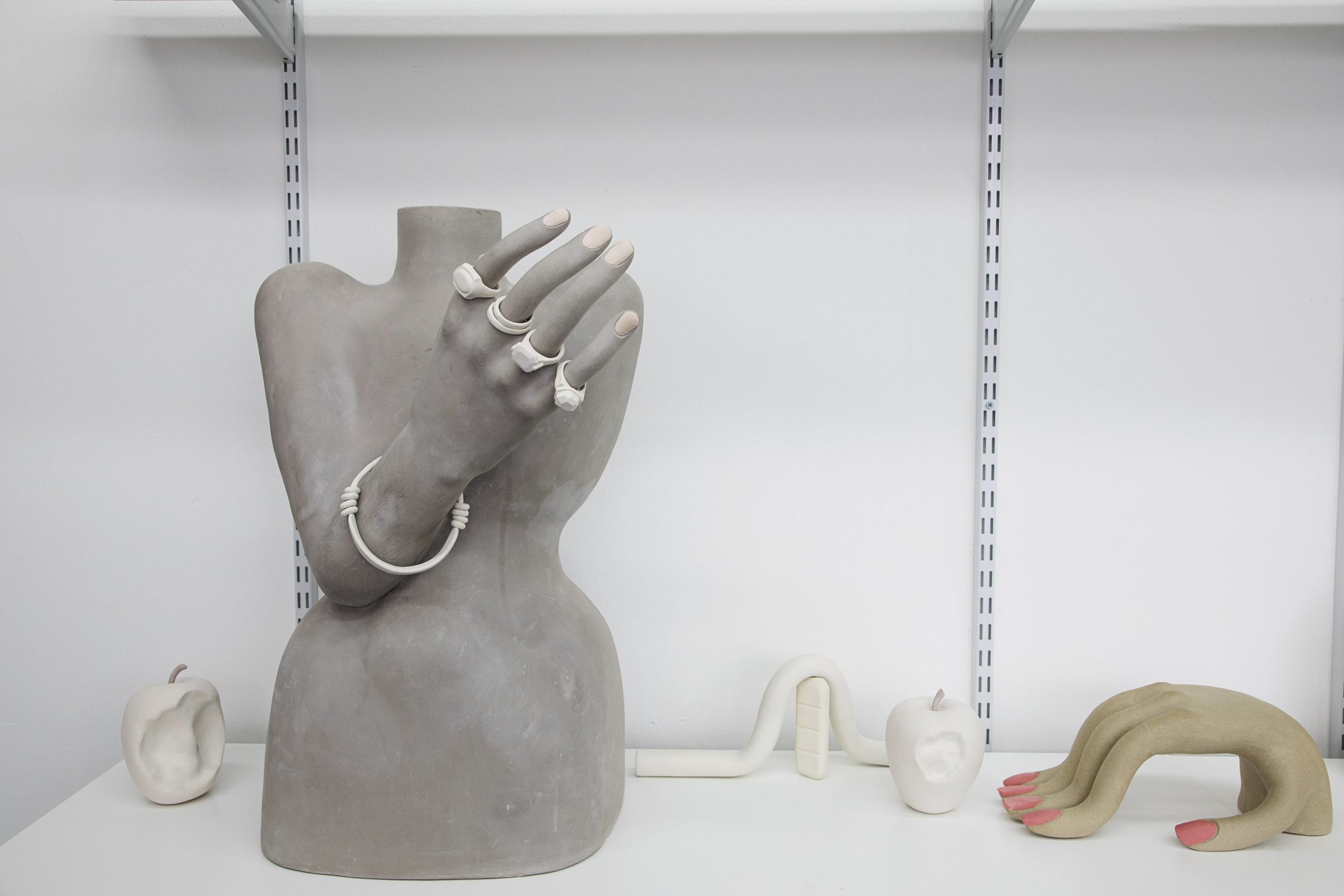 Genesis Belanger’s studio
Genesis Belanger’s studioPhoto by Steve Benisty
GENESIS BELANGER: I actually just moved in. I’ve been here since the spring, I moved just after NADA.
WW: Your booth with Mrs. Gallery at NADA was amazing. Can you tell us about the installation there?
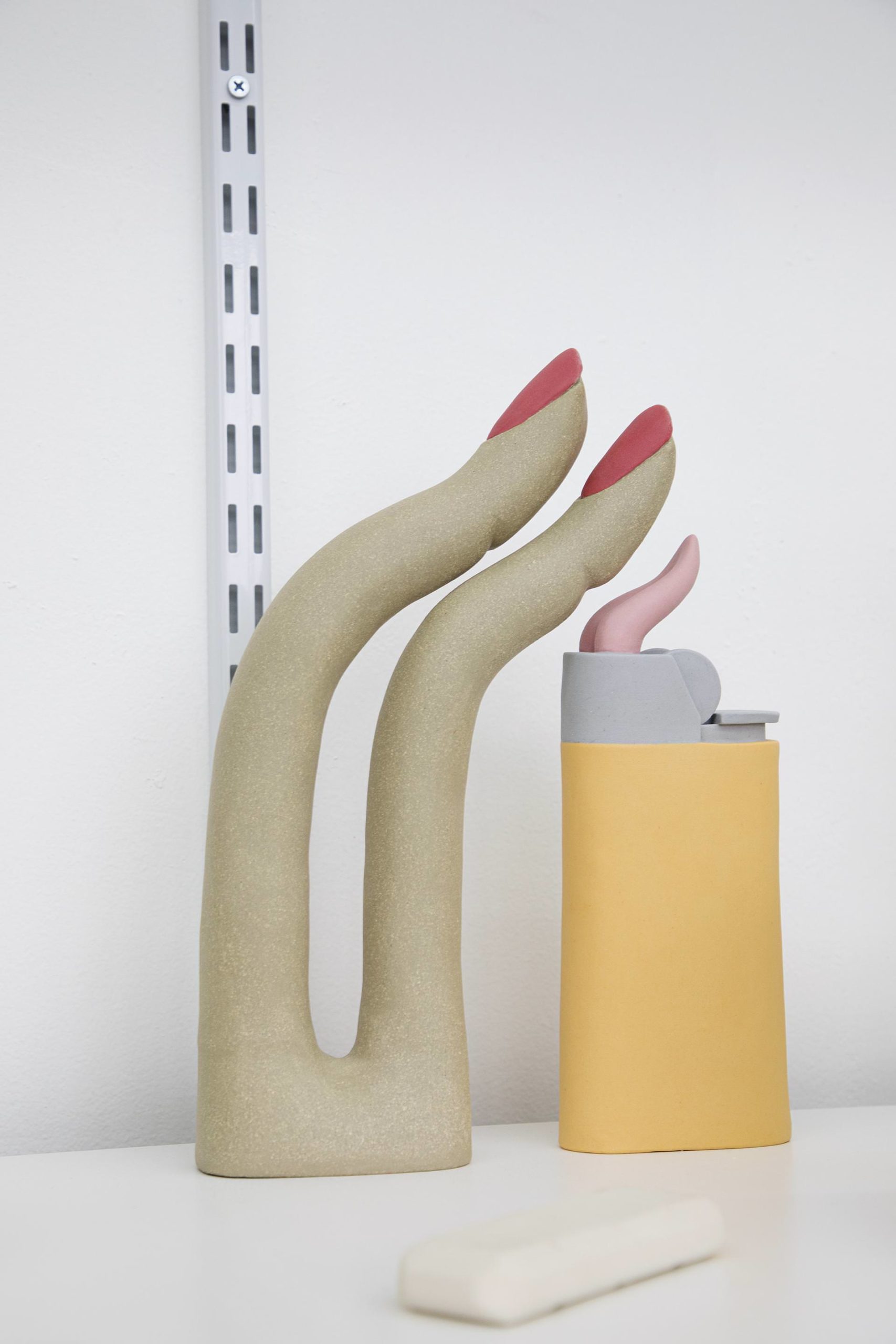 Genesis Belanger’s studio
Genesis Belanger’s studioPhoto by Steve Benisty
GB: I like my work to be shown loosely in an installation and our fair booth was ideal to create an intimate vignette. I had been looking at gentlemen’s clubs and exclusive hotels around the turn of the century, and thinking about who these spaces were for and who they excluded. That was my jumping off point for all of the objects, what role is left for those excluded in these privileged spaces. I built a ridiculous party where everything had been perverted and transformed.
WW: What’s usually a starting point for you for a series?
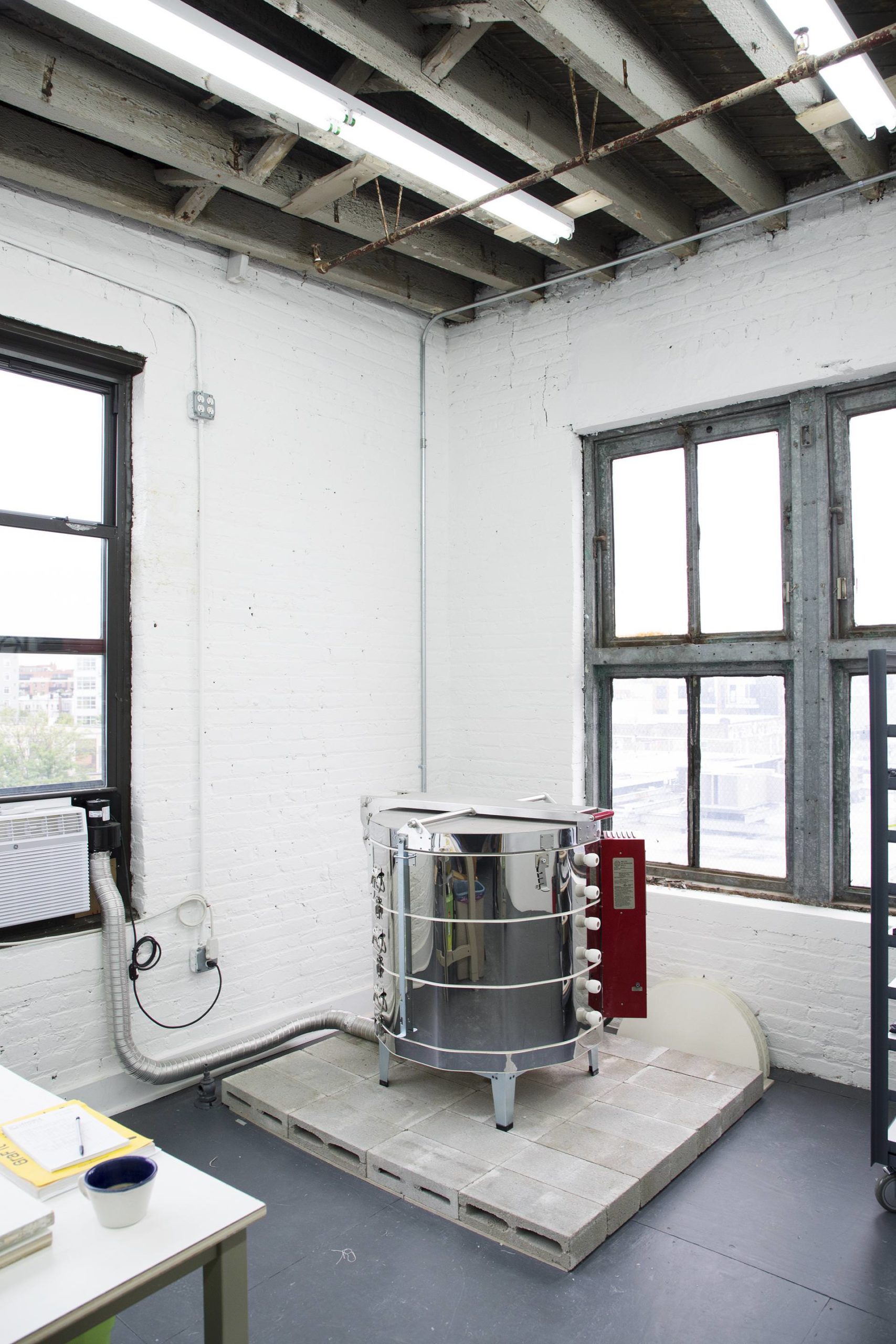 Genesis Belanger’s studio
Genesis Belanger’s studioPhoto by Steve Benisty
GB: I listen to books on tape while I work and lots of the time they are history books. I am working and simultaneously getting really upset about systemic injustice and how this injustice from our past has created the fabric of our present.
I also think about how in advertising lifestyles are sold to us, and how our idea of the world we inhabit is this strange constructed narrative that falls apart very easily as soon as you start doing some research. I am constantly trying to make things that exist in the present but carry a little bit of their past with them? When I choose the things that I make, I think about their loaded history and I am drawn to objects that operate as multi-layered symbols like the cigarette.
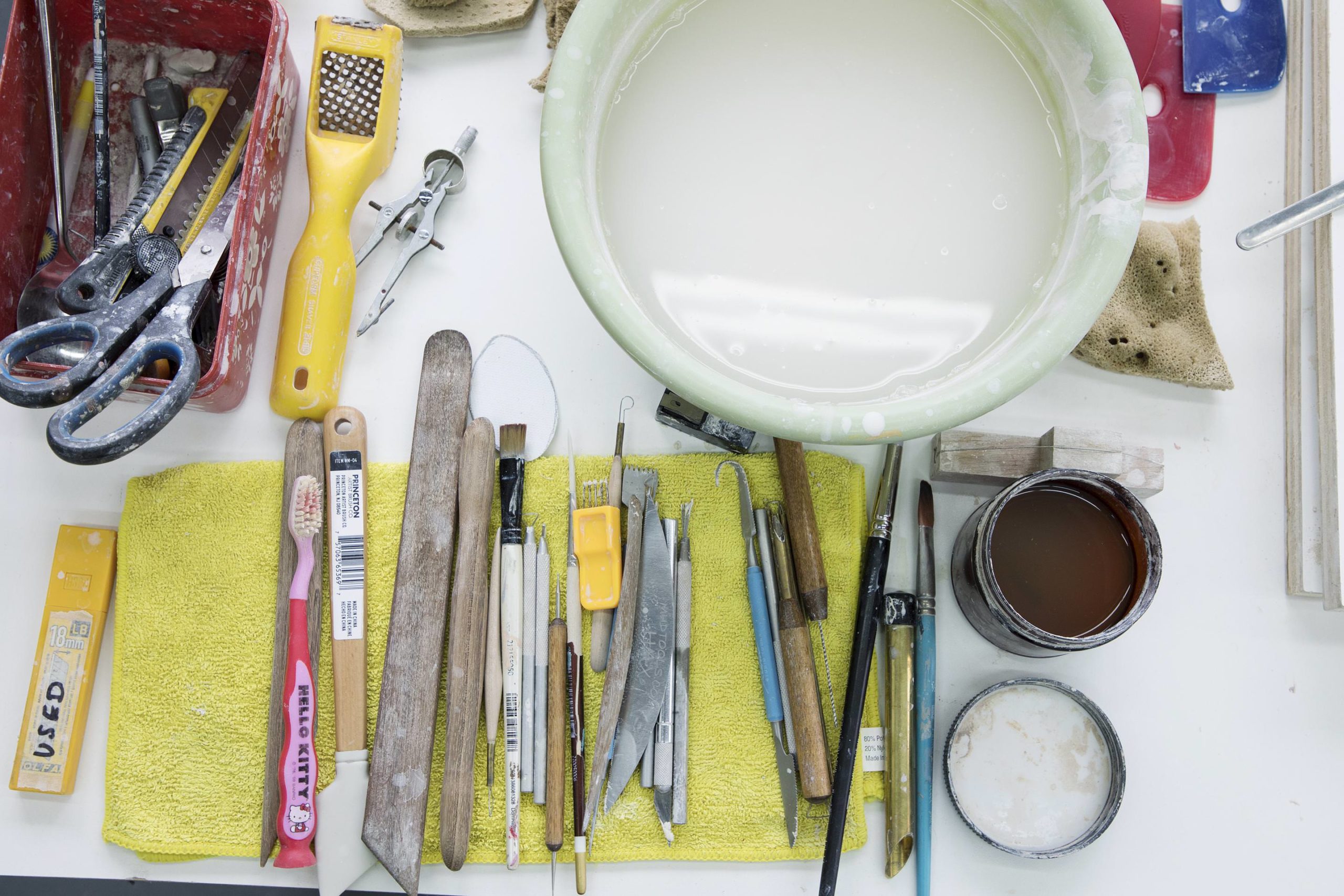 Genesis Belanger’s studio
Genesis Belanger’s studioPhoto by Steve Benisty
A cigarette is this thing that kills us and simultaneously makes us feel alive. Historically women didn’t smoke. Male advertising executives, consciously created a link between smoking and women’s suffrage- called cigarettes “torches of freedom” and cashed in on the lost profits. This is indicative of how the system works in general, we think we have a choice- are projecting our decision with our actions- but really we are being manipulated.
WW: And it does work!
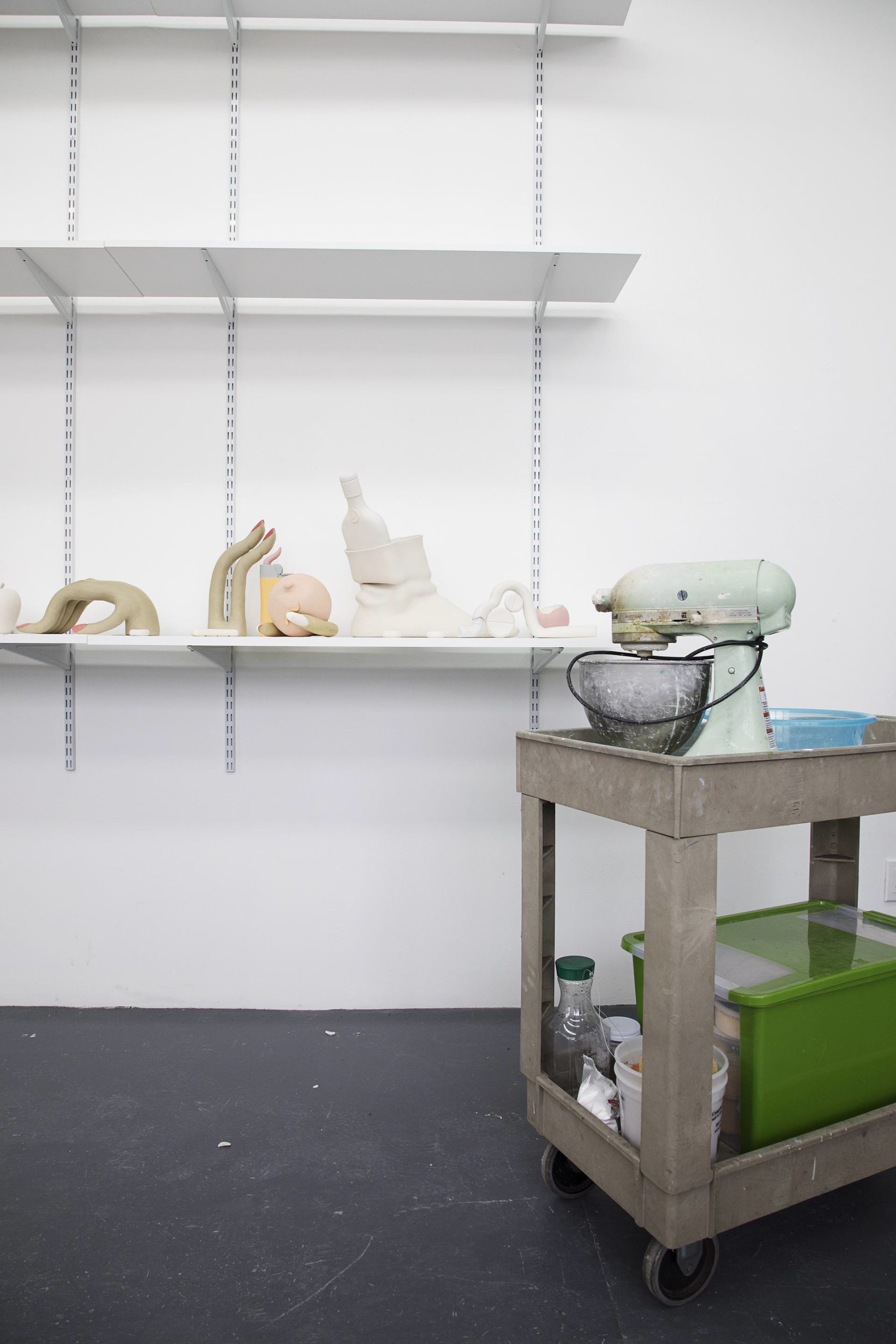 Genesis Belanger’s studio
Genesis Belanger’s studioPhoto by Steve Benisty
GB: I think that objects can be surrogates for ourselves. People in New York judge each other on their shoes. Shoes tell you a lot. Or men judge each other on their watches or the way the buttons on their suits operate. These little markers are passports to the class structure.
WW: Are there some objects like the cigarette that you revisit?
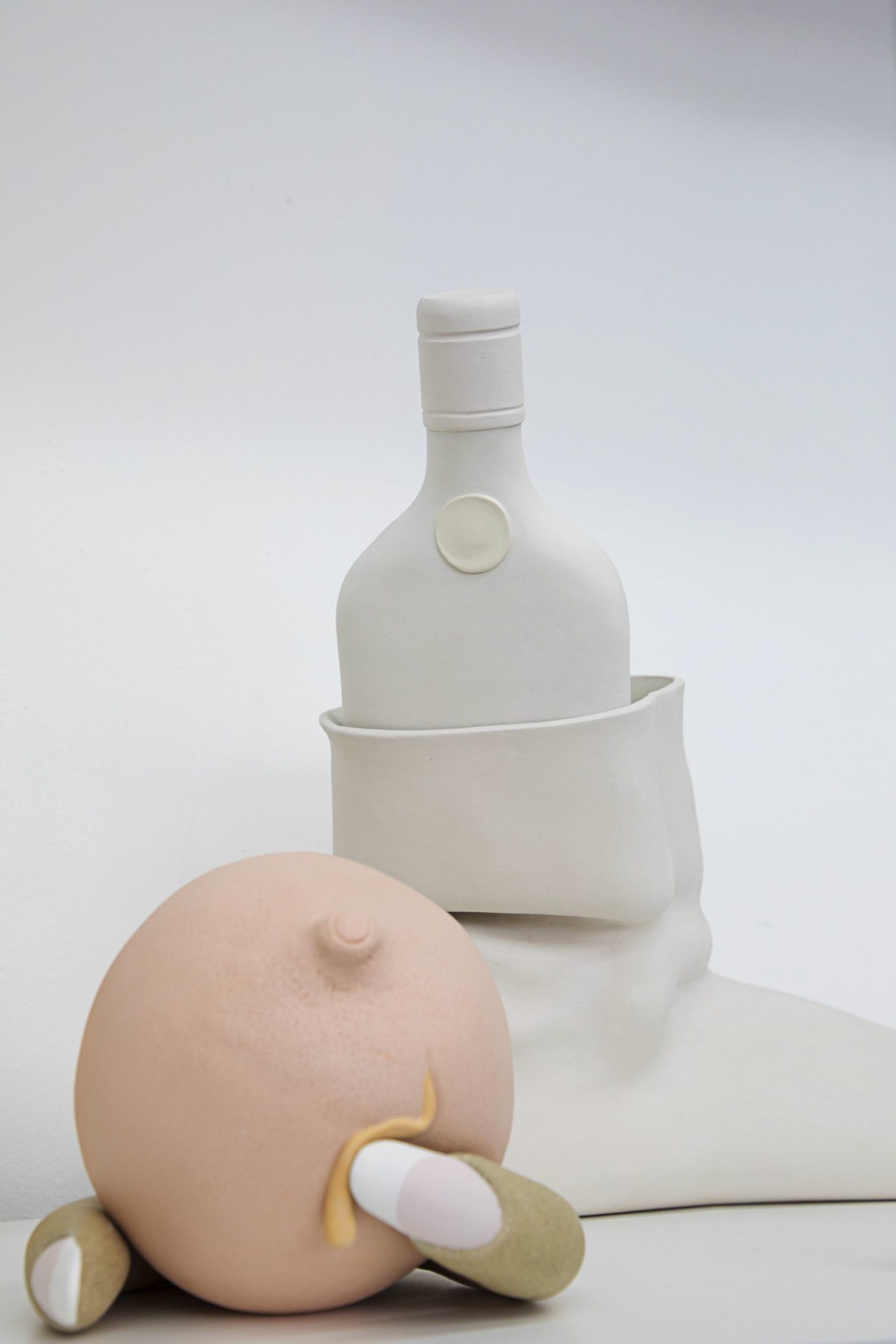 Genesis Belanger’s studio
Genesis Belanger’s studioPhoto by Steve Benisty
GB: Totally. I also make a lot of apples. In fairytales, the female character is always a girl, a princess, waiting to be rescued or saved by a man. If there are any adult women at all, they’re evil stepmothers, evil queens, or witches. Aging biter women plotting to destroy the young, innocent, beautiful girl.
WW: Are there any new things your working on or exploring?
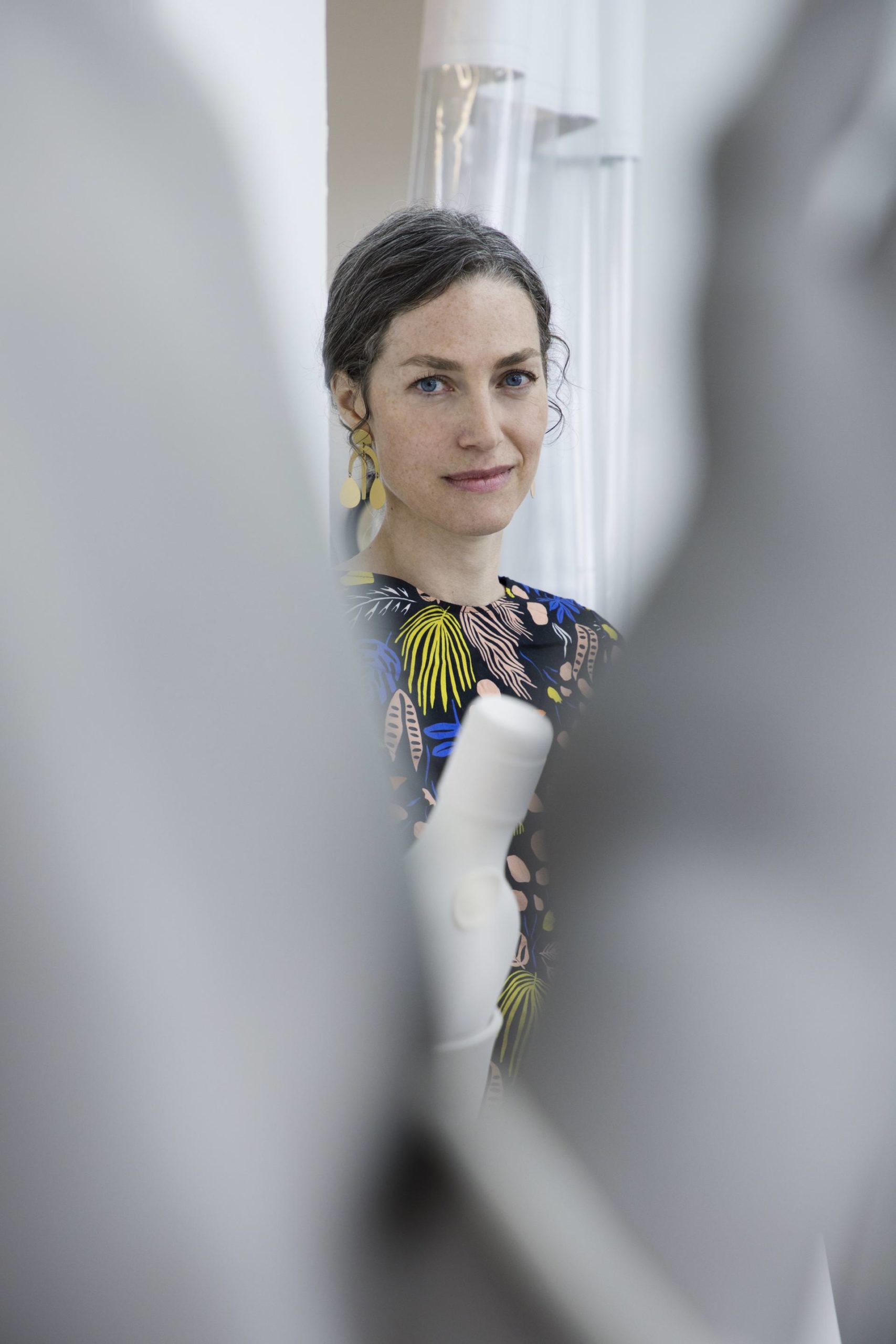 Genesis Belanger in her studio
Genesis Belanger in her studioPhoto by Steve Benisty
GB: I’m trying to scale up. This new lamp with the hand is much bigger than I usually work. I’m going to make some cigarettes that are four-inches in diameter; big, slopey ones that may slump over giant pills.
WW: And are they hollow?
GB: Yes. They’re hollow. All my work is hollow. I roll the clay out on a slab roller and make everything from a flat sheet.
WW: Where does the color choice come from?
GB: I’m always attracted to this pastel palette that I call “sad pastel.” I’ve worked in a lot of different mediums and it’s always stuck. Like the way everything in LA has that sun-bleached feel, like something’s been sitting outside for too long, it’s fun, but there’s a dark edge to it that I really like. And it’s nostalgic.
I read an article in grad school that said nostalgia exists because it’s the emotion that brings us to hope. And that without nostalgia, we are just stuck in the present that may or may not be horrific. What pulls you out of this depression is the promise that maybe tomorrow will be better. We believe in that promise because we remember things were better in the past. No matter how fucked up the present is, nostalgia makes us think that it could get better.
WW: With glazing clay, you don’t always know you’ll get color-wise when it comes out of the kiln. Is that something that you like?
GB: I never use glaze, but with my pigmenting process-yes, it makes me feel like I’m not an expert, may never be an expert, which is really good. I think artists can get carried away with their egos (which scares me) and I like feeling like I’m just barely pulling off making my work. It makes me feel like I have something to work towards.
WW: How long have you been working with porcelain and ceramics?
GB: I haven’t been working with it that long. I started working with it in grad school. My studio was right next to the kilns and Hunter is a little bit lawless, so I could really experiment. Then I didn’t have a kiln so I didn’t work with clay for a couple years. Then two years ago, I bought a baby kiln. After that I stopped working with all my other materials (except for concrete) and just focused on ceramics. In total maybe I’ve worked in clay- three years.
WW: When you’re here in the studio, is it pretty quiet or are you always listening to something?
GB: I’m always listening to something. I have these noise-cancelling headphones that I wear all the time because I really like it quiet. I listen to books on tape, and podcasts all the time.
WW: Is it mostly nonfiction?
GB: It’s a total mix. I’ll go through phases, for example I listened to the autobiography of Alexander Hamilton and then I wanted to know everything about revolutionary America. If this gets depressing I’ll need some entertainment, so I’ll listen to books on other subjects, or switch to fiction. I listen to lots of historical fiction.
If I find an author I like I may listen to all their books when The Goldfinch was really popular, I listened to everything else Donna Tartt ever wrote. I think she’s the most amazing author.
WW: Do you have set hours that you like to keep?
GB: Yeah, I work Monday-Friday. I say 10–7, but it’s probably like 11–7.
WW: Are you in the neighborhood?
GB: I’m a five-minute walk.
WW: And we saw you had a show coming up this fall with Perrotin. What will that be like?
GB: It’s a two-person with Emily Mae Smith Organized by Valentine Blondel. I’m excited to get to work on a project with these two women I really respect and who are my close friends. It’s in November. This week I start working on it.






